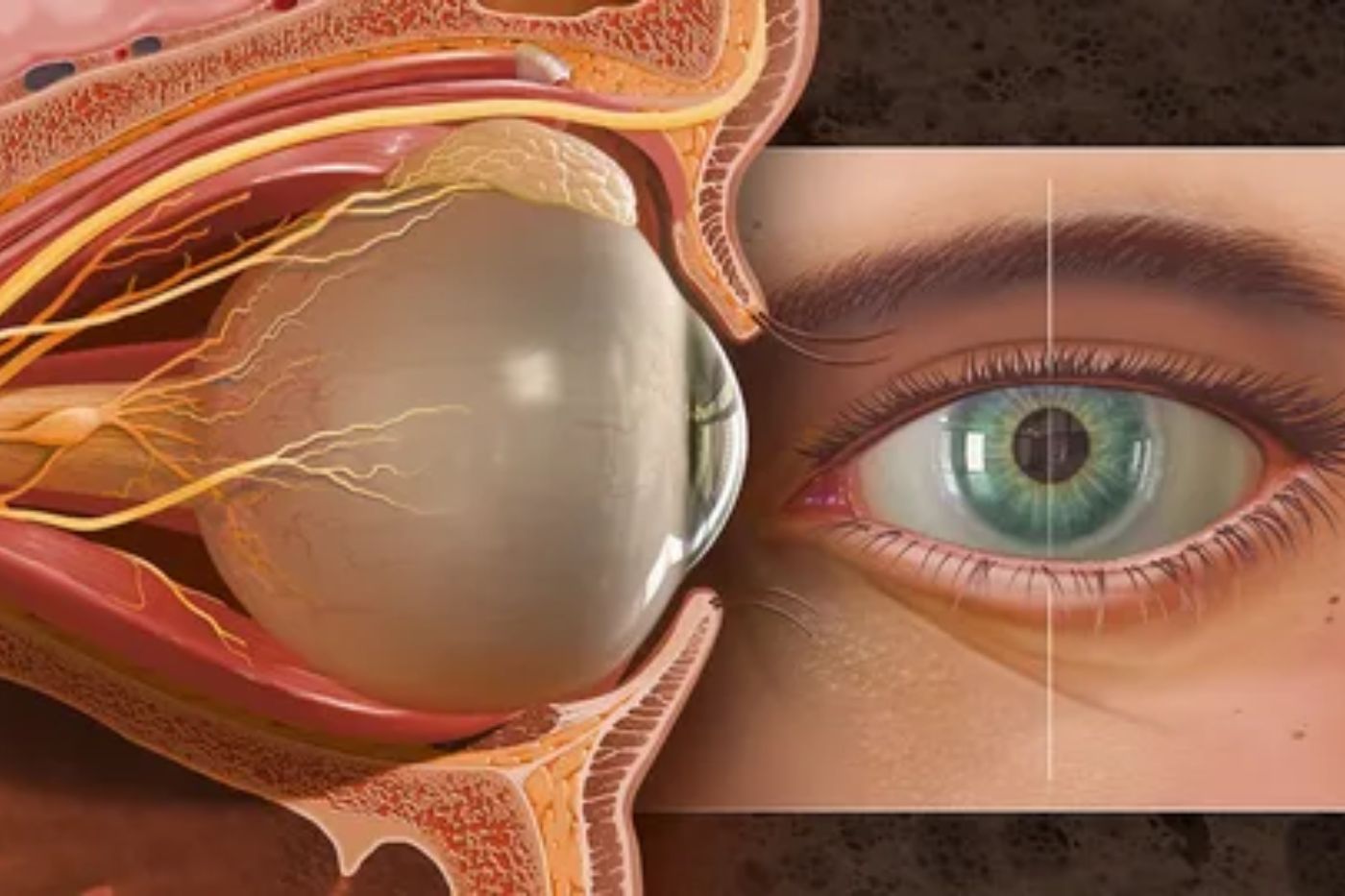Eye anatomy refers to the structure and parts of the human eye. Each part plays a critical role in vision and how we perceive the world around us. Understanding eye anatomy helps us appreciate the complexity of our visual system.
The eye is a fascinating organ that captures light and transforms it into images we can understand. From the moment light enters the eye, a series of intricate processes begin. This article explores the various components that make up the eye and their specific functions.
We will discuss the different eye parts, their roles, and common eye conditions that can affect vision. By the end of this article, you’ll have a clearer picture of the complex anatomy of the human eye and its importance for overall health.
The Basics of Eye Anatomy
The human eye is an intricate structure comprised of several parts that work together seamlessly. Each part has a unique function that is crucial for effective vision. Understanding these components can provide insight into how we see and interpret our surroundings.
The outermost layer of the eye is called the sclera, often referred to as the “white” of the eye. This tough, fibrous layer provides protection and maintains the shape of the eye. Beneath the sclera lies the choroid, a vascular layer that nourishes the eye and absorbs excess light.
The innermost layer is the retina, where light is converted into neural signals that the brain interprets. Understanding these layers is essential for grasping how we perceive light and color, as well as recognizing potential issues that can arise within the eye.
Eye Structure: Layers and Components
The sclera serves as the tough outer layer of the eye, providing both protection and structural integrity. It is composed of dense connective tissue that helps maintain the eye’s shape and protects the internal components. This sturdy structure plays a vital role in safeguarding the more delicate parts of the eye.
Underneath the sclera lies the choroid layer, which is rich in blood vessels. This layer supplies essential nutrients to the eye and helps remove waste products. The choroid also contains pigment that absorbs excess light, preventing it from scattering within the eye and ensuring clearer vision.
The innermost layer, the retina, is crucial for converting light into electrical signals. It is home to photoreceptors known as rods and cones, which detect light and color. These signals are then transmitted to the brain via the optic nerve, allowing us to perceive images and colors in our environment.
Eye Parts and Their Functions
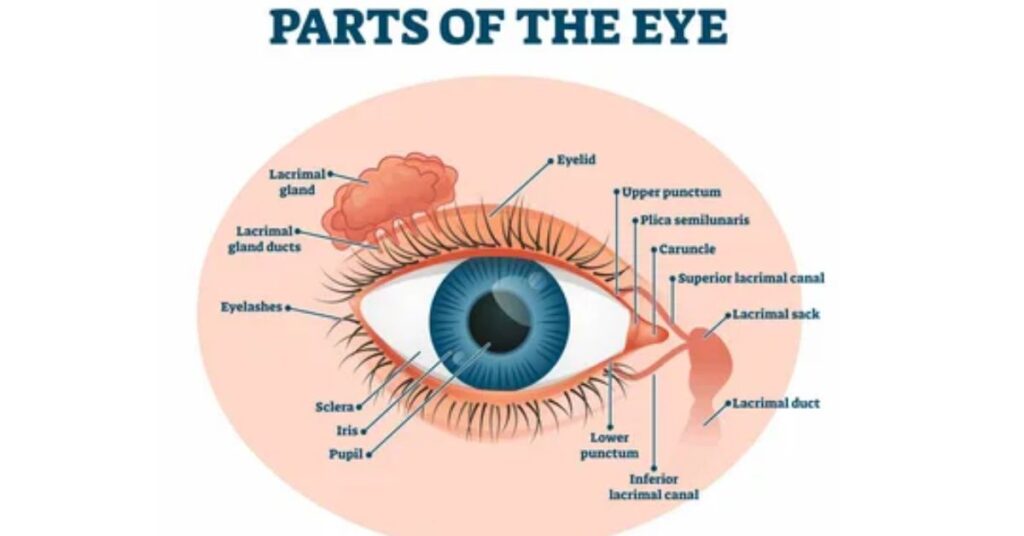
The eye comprises many parts, each with specific functions essential for vision. The cornea, for instance, is the clear front part of the eye that covers the iris and pupil. It refracts light as it enters the eye, helping to focus images on the retina.
The pupil is the opening in the center of the iris, which is the colored part of the eye. The iris regulates the size of the pupil to control how much light enters the eye. This adjustment helps protect the retina from excessive light and enhances visual clarity.
Behind the pupil is the lens, which plays a crucial role in focusing light onto the retina. The lens can change shape to help focus on objects at varying distances. This ability to adjust ensures that we can see clearly, whether looking at something far away or up close.
Importance of Eye Anatomy for Vision Health
Understanding eye anatomy is vital for maintaining optimal eye health. Knowing how each part functions aids in recognizing potential issues that may arise. This knowledge can help in the early detection of eye problems and conditions.
Regular eye exams are essential for monitoring vision health and catching any changes early on. These exams can identify refractive errors such as nearsightedness and farsightedness. By addressing these issues promptly, individuals can avoid further complications and maintain clear vision.
Additionally, awareness of eye anatomy can guide individuals in protecting their eyes from injury or damage. Proper eye care and protection are key to preserving vision over time, allowing us to enjoy the world around us without hindrance.
Common Eye Conditions: An Overview
Eye conditions can affect anyone, regardless of age or health status. They can range from mild issues that are easily corrected to serious disorders that require medical intervention. Common eye problems include refractive errors, infections, and retinal disorders.
Refractive errors, such as nearsightedness and astigmatism, occur when the eye does not bend light correctly. These errors often lead to symptoms like blurry vision and eye strain. Understanding these conditions can help individuals seek appropriate treatment options.
Infections, such as conjunctivitis, can cause redness, irritation, and discomfort. These infections are often caused by bacteria or viruses and can spread easily. Timely treatment is crucial to prevent complications and protect overall eye health.
Key Components of Eye Anatomy
The human eye consists of several key components that are essential for proper function. Here are some important parts to know and understand:
- Cornea: The clear front part that refracts light and protects the eye.
- Iris: The colored part that controls the size of the pupil and light intake.
- Pupil: The opening that allows light to enter the eye, adjusting size as needed.
- Lens: Focuses light onto the retina, changing shape for near or far vision.
- Retina: Contains photoreceptors that convert light into signals for the brain.
These components work in harmony to create clear images and facilitate our sense of sight. Understanding each part helps in recognizing how vision functions and the importance of eye health.
Exploring the Retina and Its Functions
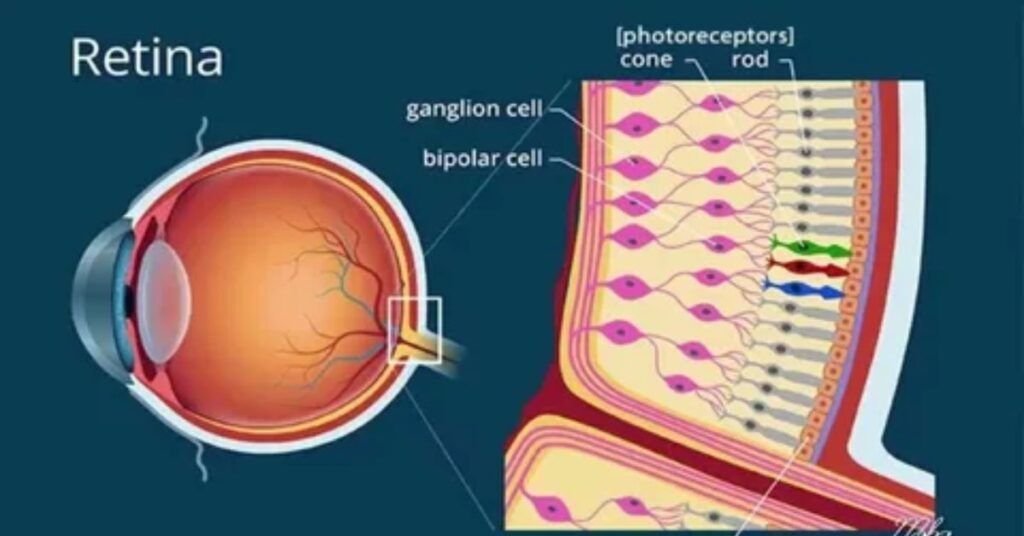
The retina is a vital component of the eye and plays a crucial role in vision. Located at the back of the eye, it processes incoming light and converts it into electrical signals. This conversion is essential for the brain to interpret visual information accurately.
Within the retina, there are two primary types of photoreceptors: rods and cones. Rods are sensitive to low light levels and are responsible for night vision. Cones, on the other hand, detect color and function best in bright light, allowing us to see a wide spectrum of colors.
The retina not only detects light but also contains layers that process the signals before sending them to the brain. Damage to any part of the retina can lead to serious vision problems, making its health vital for overall visual acuity.
Layers of the Retina
The retina consists of several distinct layers, each serving a specific purpose in the process of vision.
- Photoreceptor Layer: This layer contains rods and cones that detect light and color.
- Bipolar Cell Layer: These cells connect photoreceptors to ganglion cells, facilitating signal transmission.
- Ganglion Cell Layer: This layer sends signals to the brain via the optic nerve, enabling visual perception.
These layers work together to ensure the accurate transmission of visual information. Any damage to these layers can lead to significant visual impairment or loss.
Retinal Disorders and Their Impact
Retinal disorders can significantly affect an individual’s vision and quality of life. Common issues include retinal detachment, where the retina separates from the back of the eye. This condition can lead to permanent vision loss if not treated promptly.
Another common issue is macular degeneration, which primarily affects central vision and is often associated with aging. This condition can make activities like reading and driving challenging, highlighting the importance of regular eye care.
Lattice degeneration is another retinal issue that weakens the retina and increases the risk of detachment. Understanding these conditions can facilitate early diagnosis and treatment, preserving vision and preventing further complications.
The Role of the Optic Nerve
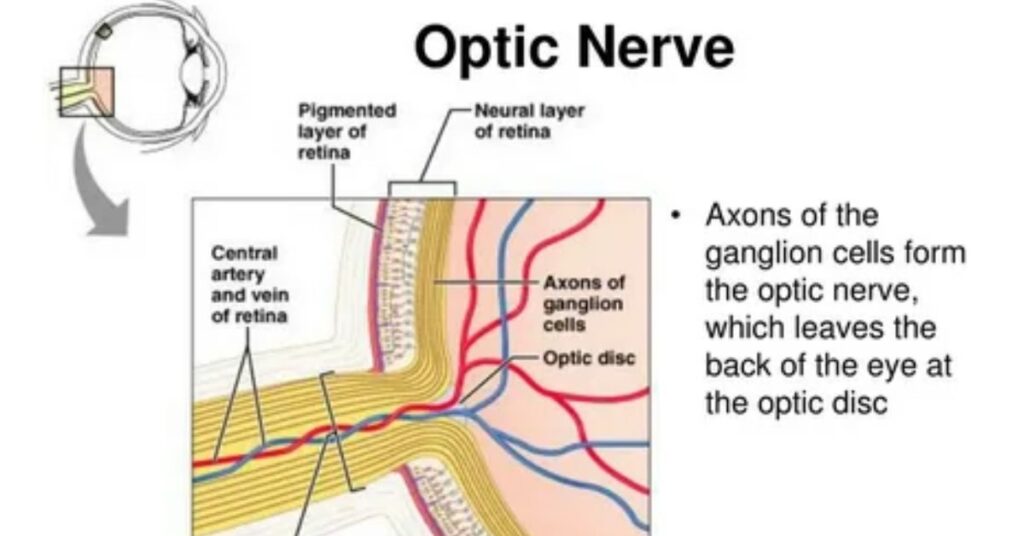
The optic nerve is essential for transmitting visual information from the eye to the brain. It carries signals generated by the retina, allowing us to perceive images. Damage to the optic nerve can lead to significant vision loss or impairment.
Conditions like optic neuritis can cause inflammation of the optic nerve, resulting in symptoms such as blurred vision or even temporary vision loss. Timely medical intervention is critical for preserving vision and preventing long-term damage.
Understanding the role of the optic nerve emphasizes the interconnectedness of eye anatomy and vision health. Protecting this nerve is vital for maintaining overall visual acuity and quality of life.
Eye Health: Maintaining Healthy Eyes
Maintaining eye health is essential for preserving vision and preventing eye conditions. Regular check-ups with an eye care professional can significantly aid in early detection and treatment of potential issues.
Here are some tips for keeping your eyes healthy and functioning optimally:
- Regular Eye Exams: Routine check-ups help in early identification of eye problems.
- Protective Eyewear: Wearing sunglasses can shield your eyes from harmful UV rays.
- Healthy Diet: Consuming foods rich in vitamins A, C, and E supports eye health.
- Limit Screen Time: Reducing time spent in front of screens can help prevent digital eye strain.
- Stay Hydrated: Drinking enough water keeps the eyes moist and comfortable.
These practices contribute to overall eye health and can prevent many common conditions. By being proactive about eye care, individuals can enhance their quality of life.
Understanding Refractive Errors
Refractive errors are common eye problems that affect how light is focused on the retina. These errors can lead to difficulties in seeing clearly and can significantly impact daily life. Common types of refractive errors include nearsightedness, farsightedness, and astigmatism.
Nearsightedness, or myopia, occurs when distant objects appear blurry while close objects can be seen clearly. This condition is often caused by an elongated eyeball or a steep cornea. Farsightedness, or hyperopia, is the opposite, where close objects are hard to focus on, usually due to a shorter eyeball.
Astigmatism results from an irregular shape of the cornea, causing blurred vision at all distances. Corrective lenses, such as eyeglasses or contact lenses, are often used to address these errors. In some cases, surgical options may be available for vision correction.
Read this Blog: Joint Diseases: Understanding, Symptoms, and Treatments
Eye Anatomy and the Importance of Eye Exams
Regular eye exams are vital for detecting issues early and ensuring optimal vision health. During an eye exam, various tests are conducted to assess visual acuity and overall eye health. These tests play a key role in identifying refractive errors and other conditions.
Eye doctors check for signs of eye diseases and assess the health of the retina and optic nerve. This comprehensive approach is essential for maintaining healthy eyes and preventing serious complications.
By understanding the importance of regular eye exams, individuals can take proactive steps to protect their vision. Early detection and intervention can make a significant difference in preserving eye health over time.
The Importance of Eye Protection
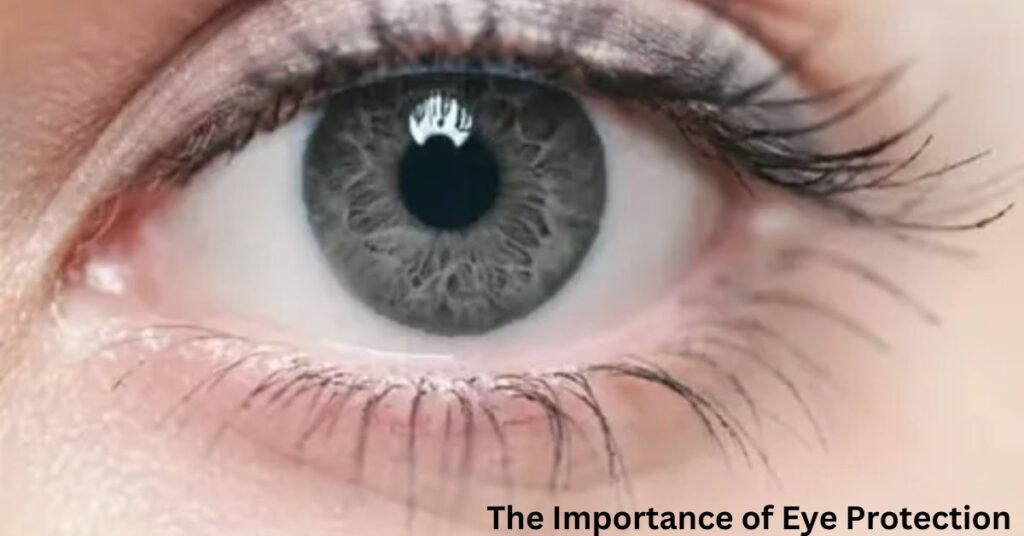
Protecting your eyes is essential for maintaining vision health and preventing injury. There are several effective strategies for eye protection that everyone should consider.
Wearing sunglasses with UV protection is one of the simplest ways to shield your eyes from harmful rays. This can help prevent conditions like cataracts and macular degeneration. Additionally, using safety goggles is crucial when engaging in activities that pose a risk of eye injury.
Maintaining proper lighting while reading or using electronic devices can reduce eye strain. It’s also important to avoid rubbing your eyes, as this can introduce bacteria and lead to infections. Following the 20-20-20 rule—looking at something 20 feet away for 20 seconds every 20 minutes of screen time—can help alleviate digital eye strain.
Understanding Eye Infections
Eye infections can range from mild irritations to severe conditions that may threaten vision. Common types of eye infections include conjunctivitis, blepharitis, and keratitis. Understanding these infections is crucial for effective treatment and prevention.
Conjunctivitis, commonly known as pink eye, causes redness, irritation, and discharge. It can be caused by bacteria, viruses, or allergens. Prompt treatment can help alleviate symptoms and prevent the spread of infection.
Blepharitis is inflammation of the eyelid margins, leading to crusting and irritation. It often results from oil gland blockage or bacterial infection. Keratitis, an infection of the cornea, can cause pain and blurred vision. Recognizing symptoms early can lead to effective treatment and healthier eyes.
Causes of Eye Infections
Eye infections can be caused by various factors, including bacteria, viruses, and allergens. Bacterial infections can lead to conditions like conjunctivitis and can spread easily. Understanding the causes can help in prevention and treatment.
Viral infections, often associated with colds or allergies, can also affect the eyes. Allergens such as pollen or dust can trigger allergic reactions, leading to irritation. Maintaining good hygiene practices, such as washing hands regularly, can help reduce the risk of infections.
Final Insights
Understanding eye anatomy enhances our appreciation for vision. Each part of the eye plays a crucial role in how we see and interact with the world. By maintaining eye health and recognizing symptoms, we can protect our vision for years to come.
Regular eye exams and protective measures are key to ensuring healthy eyes. Awareness of common eye conditions can aid in early detection and treatment, preserving vision and quality of life.
Taking care of your eyes is essential; they are vital for experiencing the beauty of the world around you. Prioritize your eye health and embrace the wonders of sight.
Frequently Asked Questions
What are common symptoms of eye problems?
Common symptoms include blurred vision, redness, and irritation.
How often should I have an eye exam?
It’s recommended to have an eye exam every one to two years.
What is the best way to protect my eyes from UV rays?
Wearing sunglasses with UV protection is the best way to shield your eyes.
Can eye conditions be treated?
Yes, many eye conditions can be treated with corrective lenses or surgery.
What should I do if I experience sudden vision loss?
Seek immediate medical attention if you experience sudden vision loss.

Zade Smith is a Proficient writer on TechsBlip, dedicated to delivering high-quality content that bridges the gap between medical research and accessible, reader-friendly guidance. With a keen interest in promoting healthy lifestyles and disease prevention, Zade’s writing offers expert insights, actionable tips, and evidence-based information to help readers make informed decisions about their health and wellness

